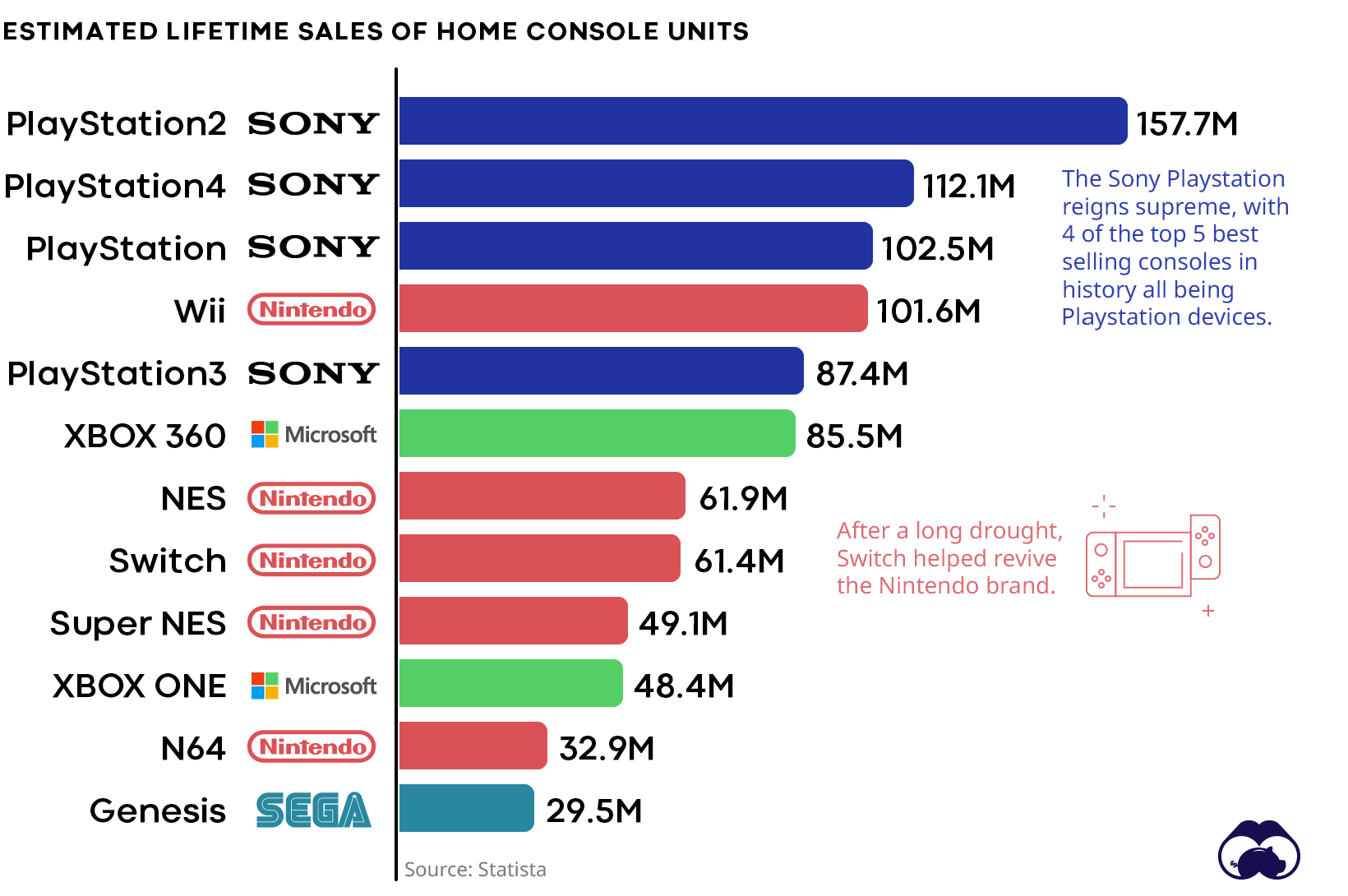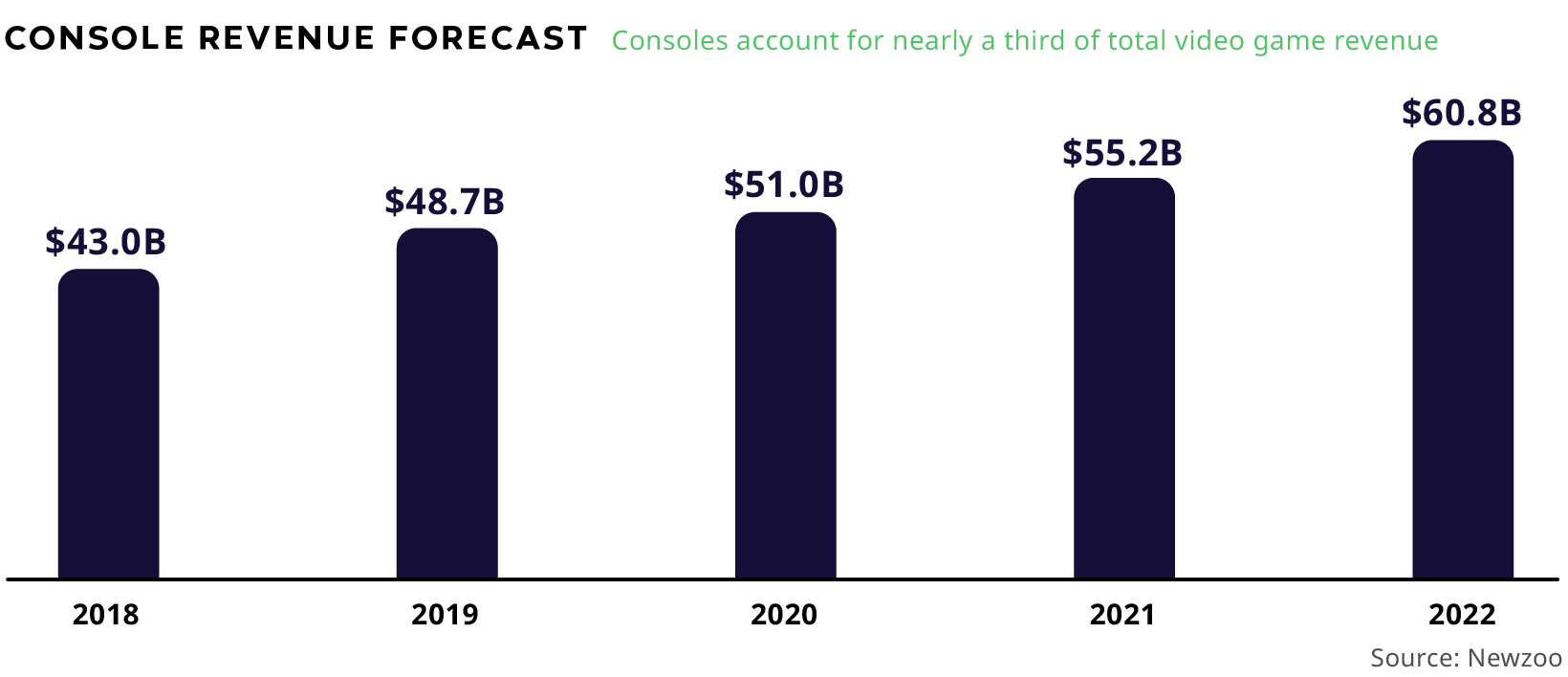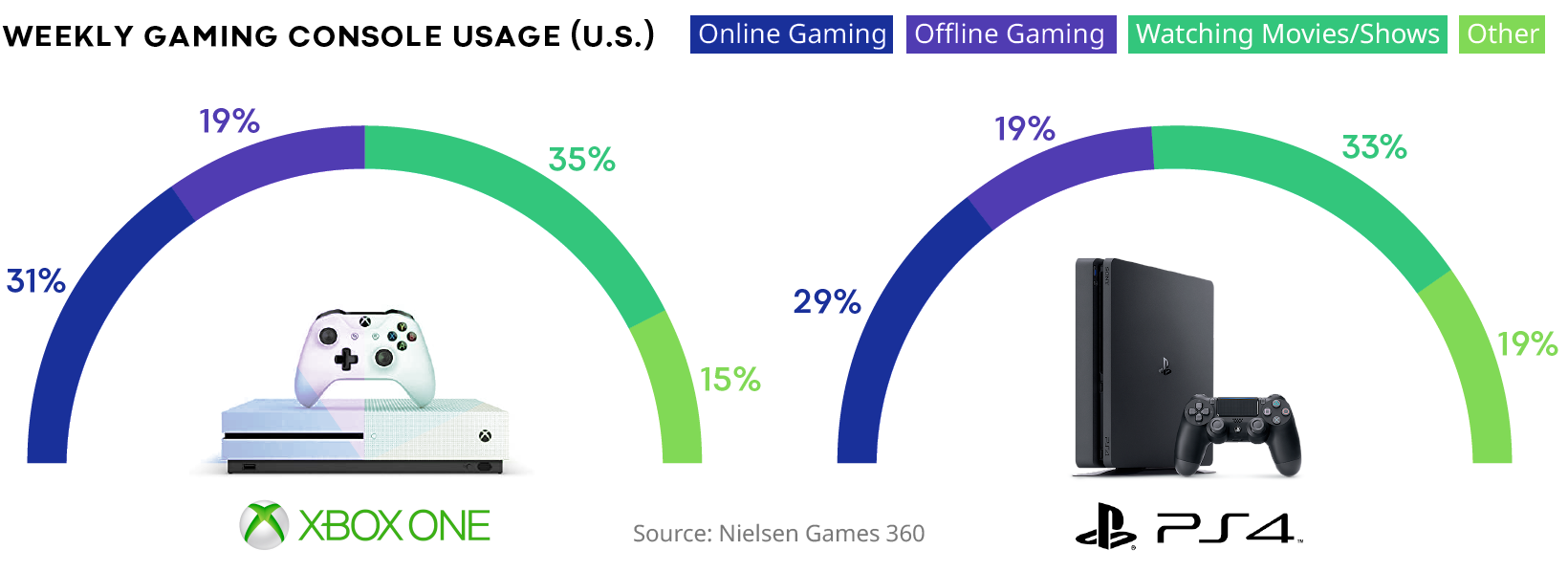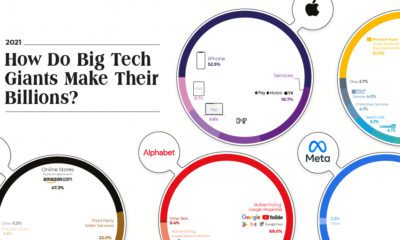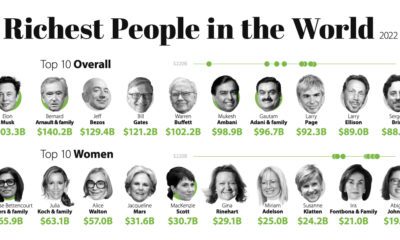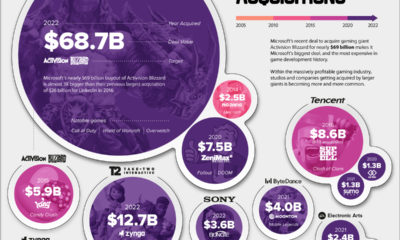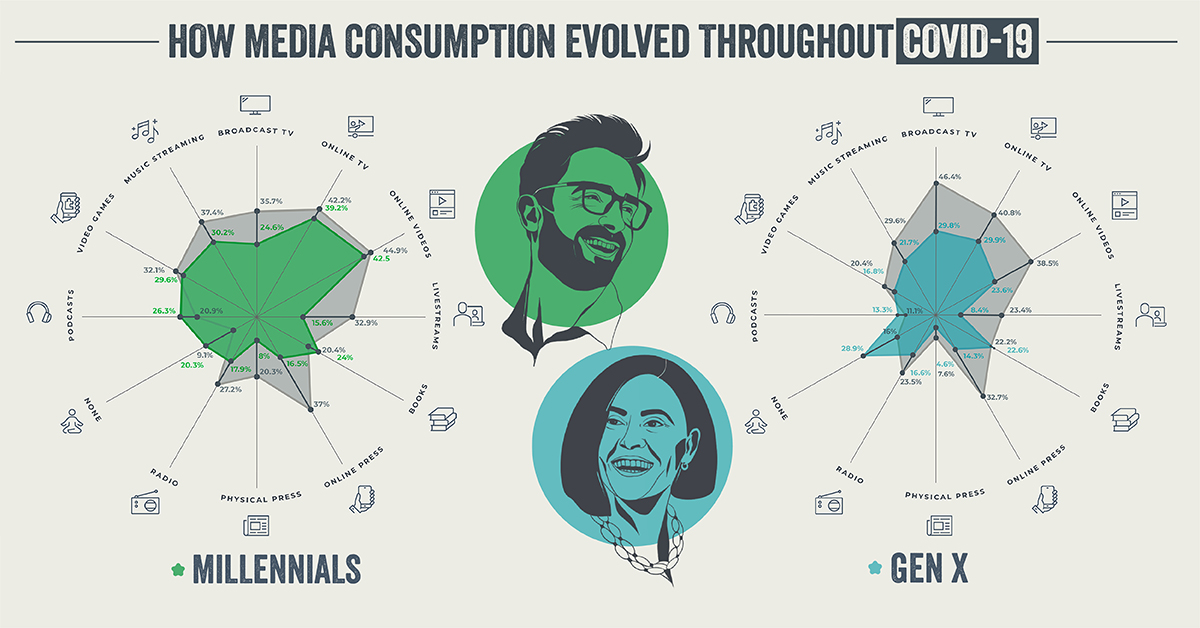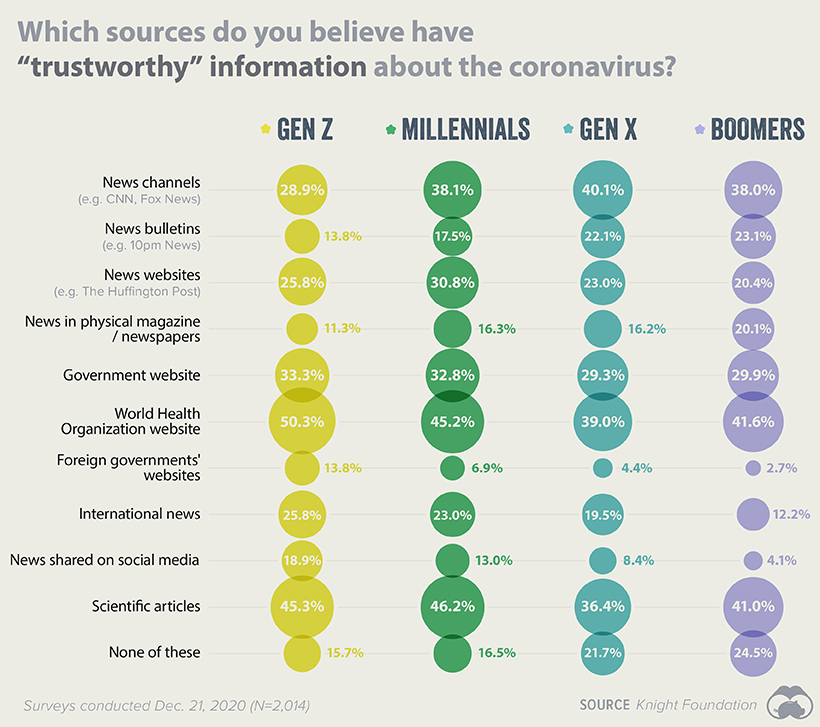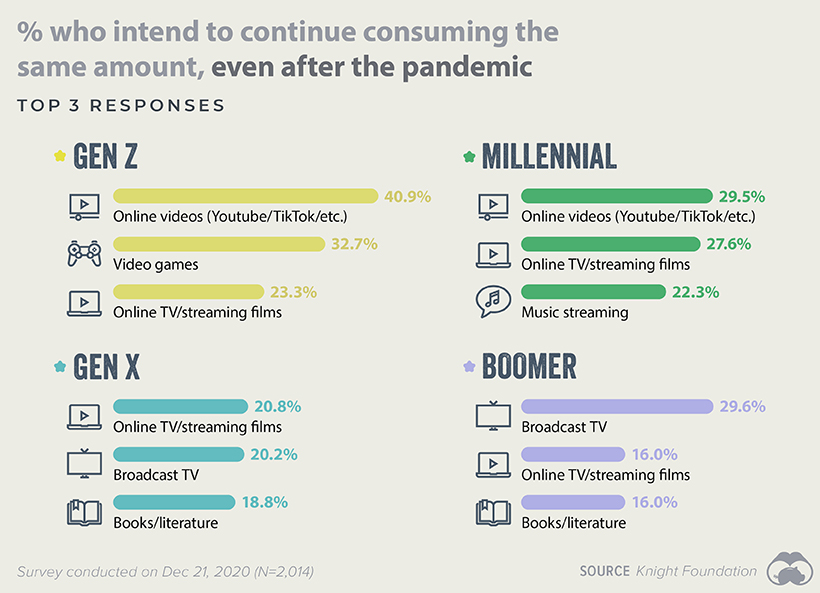For gamers in the latter category, there comes a monumental time when the cycle flips the page to the next generation of consoles. We are now at that pivotal moment, with the Xbox Series X and Sony PlayStation 5 set to launch on November 10 and 12, 2020, respectively. How will this generation of console games fare relative to past iterations, and which target demographics will be driving future sales?
There Can Only Be One
Xbox and Nintendo have put up a respectable fight, but the history of gaming console sales point to an extended era of PlayStation dominance. In fact, PlayStation sits quite comfortably on the top of the podium, with the PS2 alone experiencing greater sales than both the Xbox 360 and Xbox One combined.
Over time, Sony has only widened the gap between themselves and the competition. The spread in unit sales between PS3 and Xbox 360 ended 1.6 million in favor of Sony. In the following product cycle, Sony achieved only further dominance, with the difference between PS4 and Xbox One sales now sitting at 63.7 million units. Looking ahead, unit sale estimates for the PS5 range from 120-170 million and the new console is set to outperform Xbox again—in line with past trends.
Game Console Sales Galore
Gaming revenues have gone unscathed despite a pandemic, a retraction in economic activity, and the tightening of budgets for households in 2020. This trend could well be a result of video games growing as a form of stay-home entertainment.
On an annualized basis, global video game console revenues are to hit $51 billion in 2020 and reach past $60 billion in the next two years.
An Attractive Disconnect
It’s clear there is significant buzz around the new consoles, but here’s another perspective that highlights their allure to consumers. Video games possess an attractive disconnect in that they are an entertainment cash cow for gaming companies, yet gaming products also happen to be a huge cost saver for the consumer relative to other platforms and devices. The average cost per hour for gaming services is much cheaper than the cost of a book and even more competitive relative to the cost of entertainment giants Netflix and Spotify.
An Evolving Landscape
Consoles have transformed to being about much more than just gaming. They now take front and center in people’s homes as a centralized hub for all things entertainment. For both the Xbox One and PS4, half of all gamers use their consoles for non-gaming activity.
Another more notable form of transformation is the identity of the gamer itself. The classic portrayal of teenage boys engaged in Super Mario after school in their parents’ basement has all but dissipated. In addition to older male users, there’s now a significant emergence in female gamers. In the U.S., women surpass men in both the 36-50 and 51-65 age cohorts. Furthermore, age demographics show a higher usage amongst men in the 36-50 age group, relative to the 10-20 cohort.
A Bright Future
There are reasons to expect the next generation of console gaming to be the greatest yet. PlayStation has momentum on their side, and a slew of new gamers exist today that will continue to help transform the market. With a more digitally connected world, this new era will see gamers that play and compete with one another from all four corners of the globe. For gamers, this will be a thrilling experience—and for companies, a potentially very lucrative one. on Media consumption spiked in the early days of the COVID-19 outbreak as Americans actively sought information and entertainment while at home. Whether this changed over the course of 2020 remains unclear, however. To dive deeper into the issue, this infographic explores each generation’s shifts in media consumption habits as the pandemic wore on. Further below, we’ll also examine which media sources Americans deemed to be the most trustworthy, and why consumption habits may have changed for good.
Changes in American Media Consumption, by Generation
The data in this infographic comes from two surveys conducted by Global Web Index (GWI). The first was completed in April 2020 (N=2,337) and asked participants a series of questions regarding media consumption during COVID-19. To see how consumption had changed by the end of the year, the John S. and James L. Knight Foundation commissioned GWI to complete a follow-up survey in December 2020 (N=2,014). The following tables provide a summary of the results.
Gen Z
Unsurprisingly, a significant percentage of Gen Z reported an increase in digital media consumption in April 2020 in comparison to pre-pandemic habits. This bump was driven by higher use of online videos, video games, and online TV/streaming films. By December 2020, these media categories became even more popular with this cohort. Most notably, podcasts saw the highest increase, jumping almost 15% by the end of the year. The popularity of traditional outlets like broadcast TV and radio declined from their April 2020 highs, though they are still up relative to pre-pandemic levels for Gen Z survey respondents.
Millennials
Results from the December 2020 survey show that Millennials trimmed their media consumption from earlier in the year. This was most apparent in news outlets (online and physical press), which saw double digit declines in popularity relative to April. Books and podcasts were the only two categories to capture more interest from Millennials over the time period. It’s also worth noting that the percentage of respondents who said “none” for media consumption rose to 20.3%, up significantly from 9.1% in April. Possible factors for the increase in “none” responses include easing government restrictions and a return to more normal work schedules.
Gen X
The media consumption habits of Gen X developed similarly to Millennials over the year. Broadcast TV and online press saw the largest declines over the time period, while once again, podcasts and books were the only two categories to capture more interest relative to April. The percentage of respondents reporting “none” rose to 28.9%—a slightly higher share than that of Millennials.
Boomers
Media consumption trends among Baby Boomers were mixed, with some categories increasing and others decreasing since April. Broadcast TV saw the biggest decline in usage of all media types, but remained the most popular category for this cohort. Boomers also had the largest share of “none” respondents in both studies (23.0% in April and 31.0% in December).
Where do Americans Go For Trustworthy News?
To learn more about American media consumption—particularly when it came to staying updated on the pandemic—survey respondents were asked to confirm which of the following sources they found trustworthy.
The deviations between each generation don’t appear to be too drastic, but there are some key takeaways from this data. For starters, Gen Z appears to be more skeptical of mainstream news channels like CNN, with only 28.9% believing them to be trustworthy. This contrasts the most with Gen X, which saw 40.1% of its respondents give news channels the thumbs up. This story is flipped when we turn to the World Health Organization (WHO). Gen Z demonstrated the highest levels of trust in information published by WHO, at 50.3% of respondents. Only 39.0% of Gen X could say the same. By far the least trustworthy source was foreign governments’ websites. This category had the lowest average approval rating across the four generations, and scored especially poor with Boomers.
The Lasting Effects of the Pandemic
Habits that were picked up during 2020 are likely to linger, even as life finally returns to normal. To find out what’s changed, respondents were asked which categories of media they expected to continue consuming in elevated amounts. The chart below shows each generation’s top three responses.
Note that the top three for both Gen Z and Millennials are all digital and online categories (video games can be played offline, but the majority of popular titles are online). This contrasts with the preferences of Gen X and Boomers, who appear to be sticking with more traditional outlets in broadcast TV and books. With consumption habits of younger and older Americans moving in opposite directions, advertisers and media companies will likely need a clear understanding of their target audiences in order to be successful.
